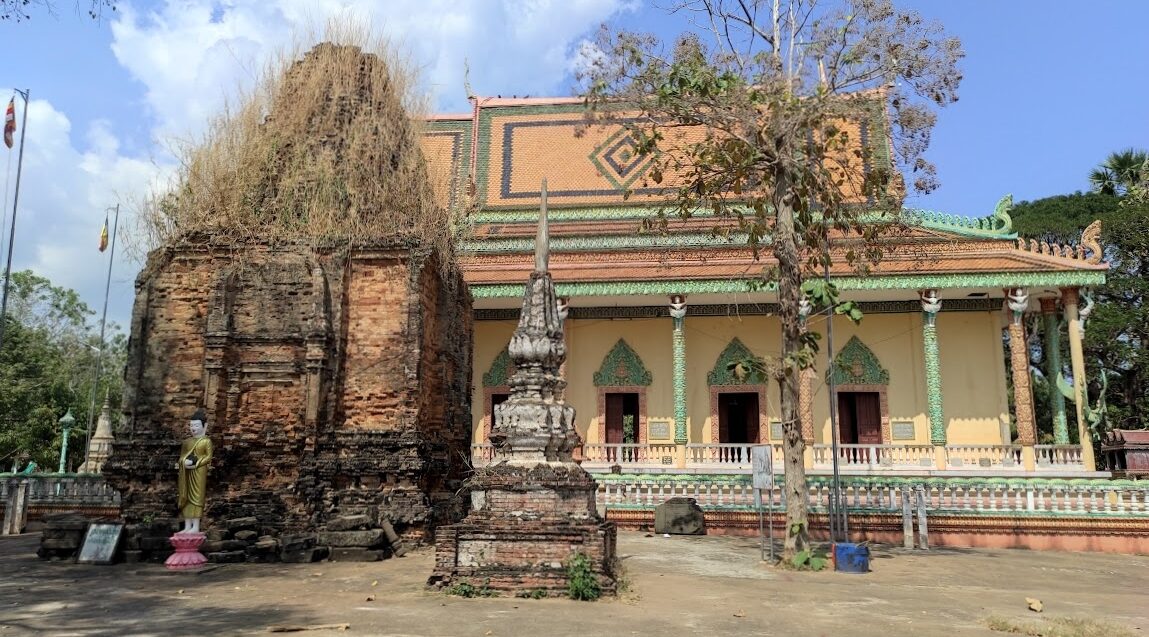The monastery of Wat Hanchey overlooks the Mekong River from its hilltop location featuring ancient sites that date back to the 7th and 8th centuries during the Chenla Era. The monastery is area is large, featuring several sculptures, pagoda, halls, a recreation of an Angkorian era temple, seating with views over the massive Mekong river making it a popular spot to relax.
The two ancient temples are located beside the pagoda on the south side of the site. One is a large brick temple, the other, a small cell, there is also a small rise of bricks where a decorated door column from an ancient temple has been placed.
Located immediately south of the pagoda, the brick temple opens to the east with a sandstone doorframe that is inscribed on both sides, more on that below, preceding which are several decorated sandstone steps. Around the other sides note the remains of the white rendering and decorative carvings which still exist in places, especially so above the columns flanking the false doors on the west and south side, above which you can just see the decayed remains of the decorative lintel that was carved and rendered into the brick. On the north side, you can see the remains of the water spout for sacred water. Very close to the temple is an old small stupa from a much later era.

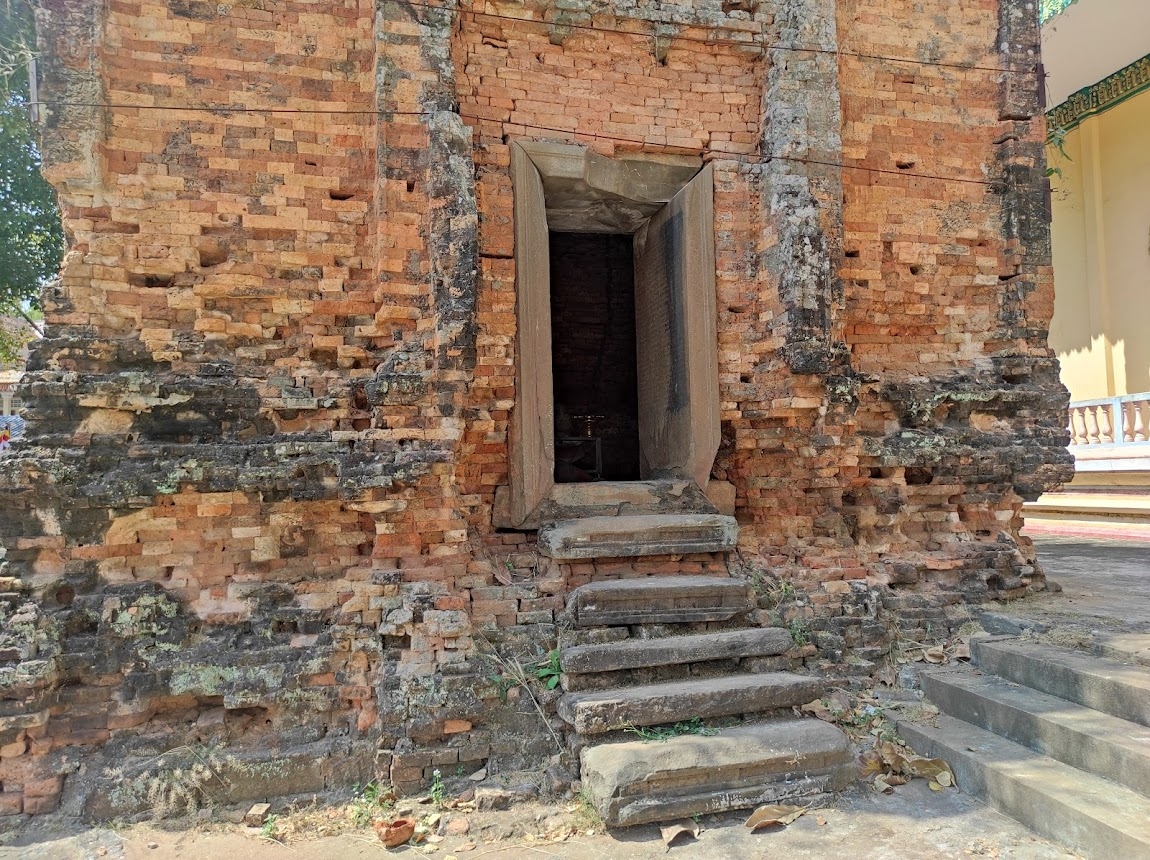
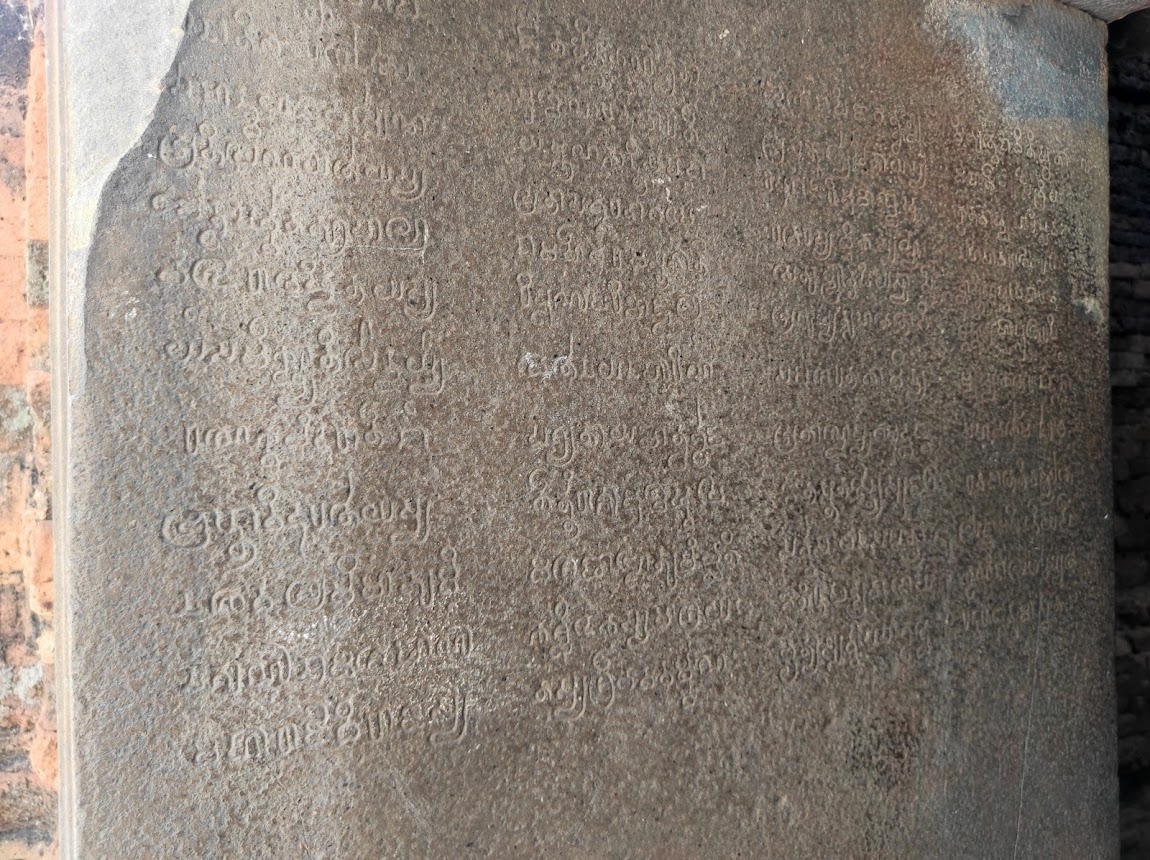
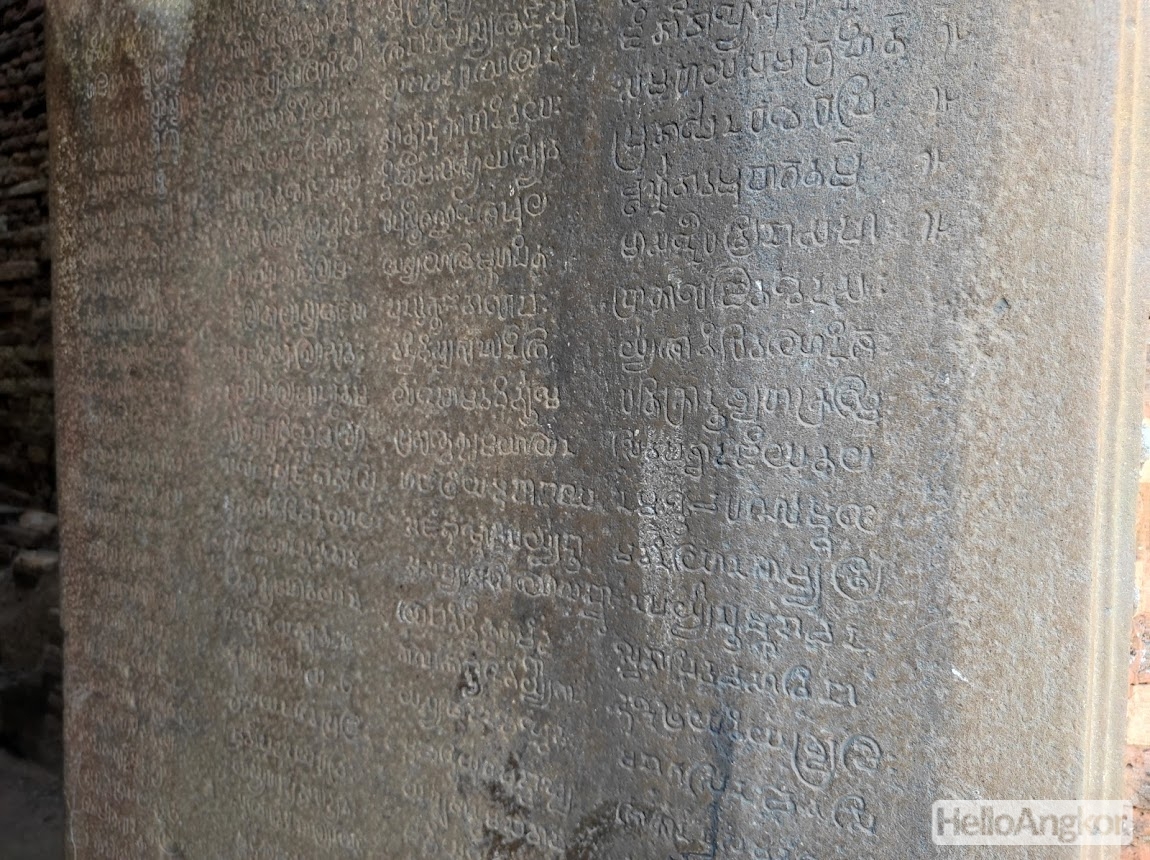
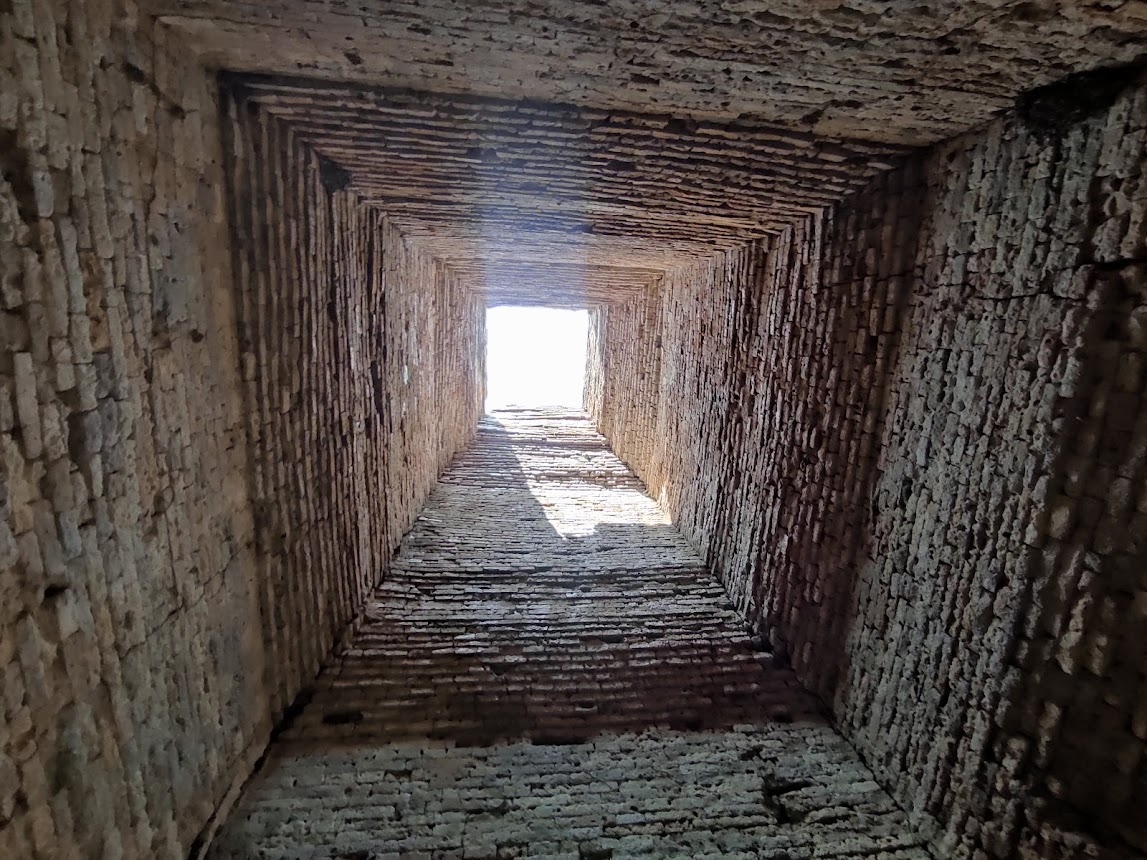


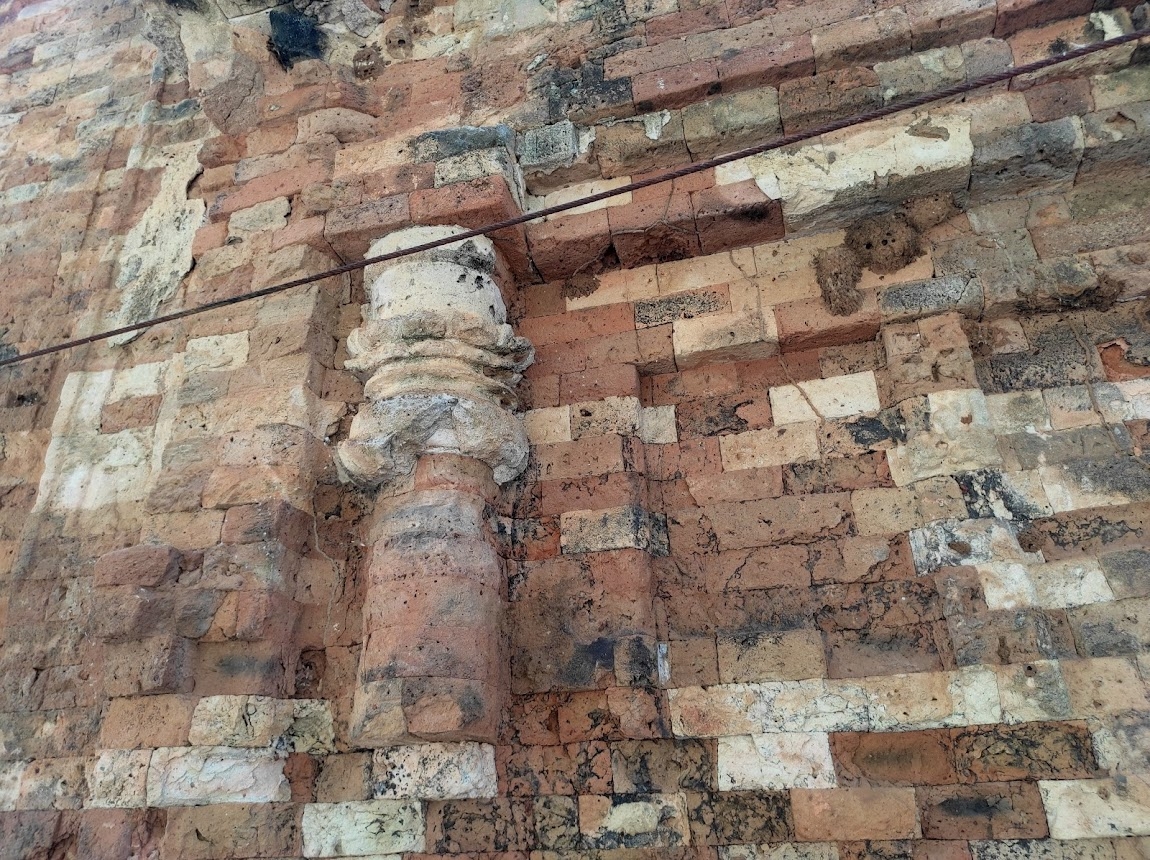
A plethora of sandstone remnants surrounds the temple including a very decayed lintel, beautifully decorated round door columns, a decorated pedestal, and sandstone slabs.
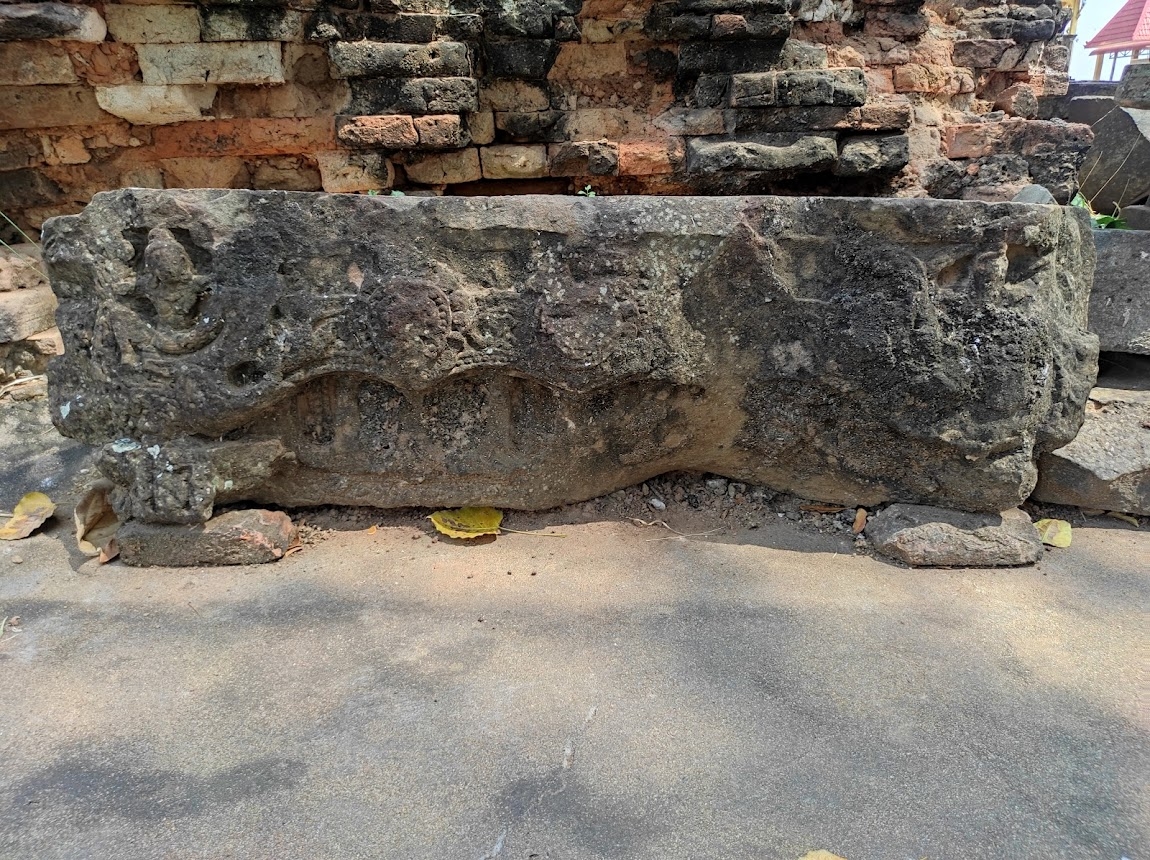
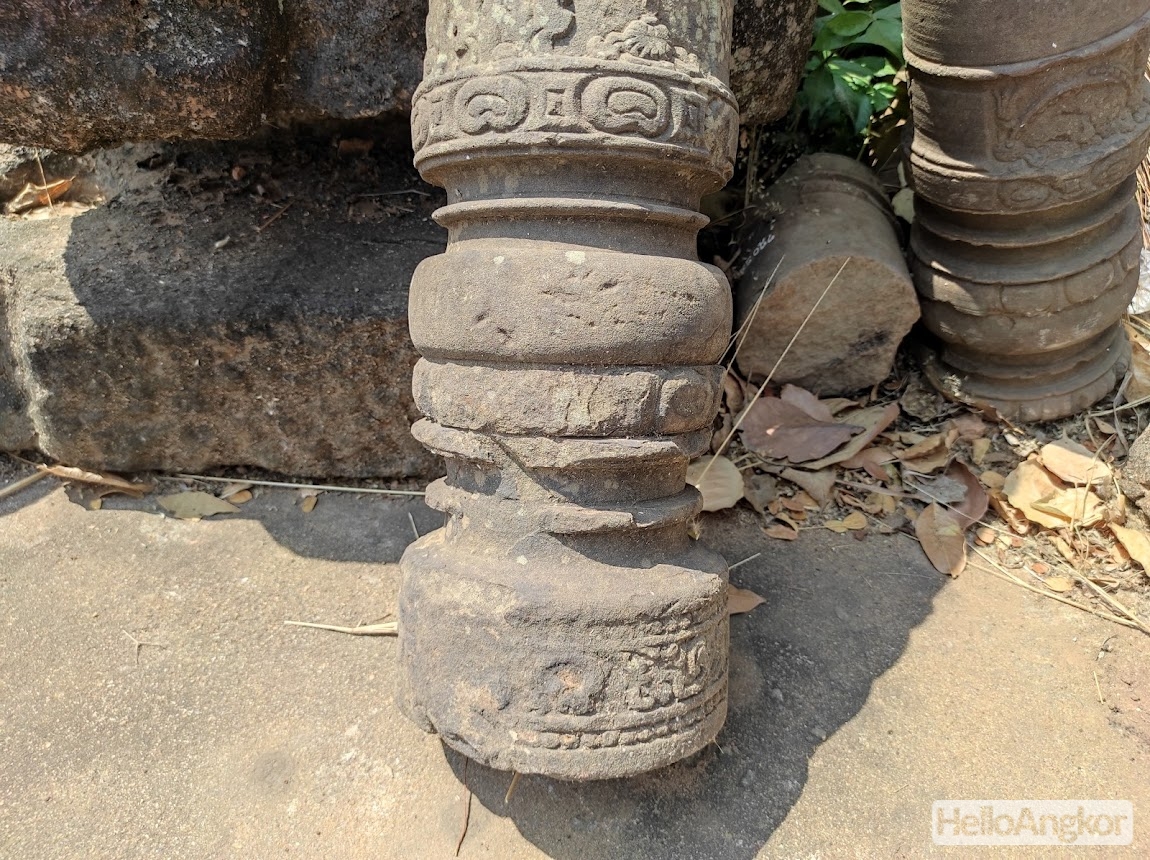


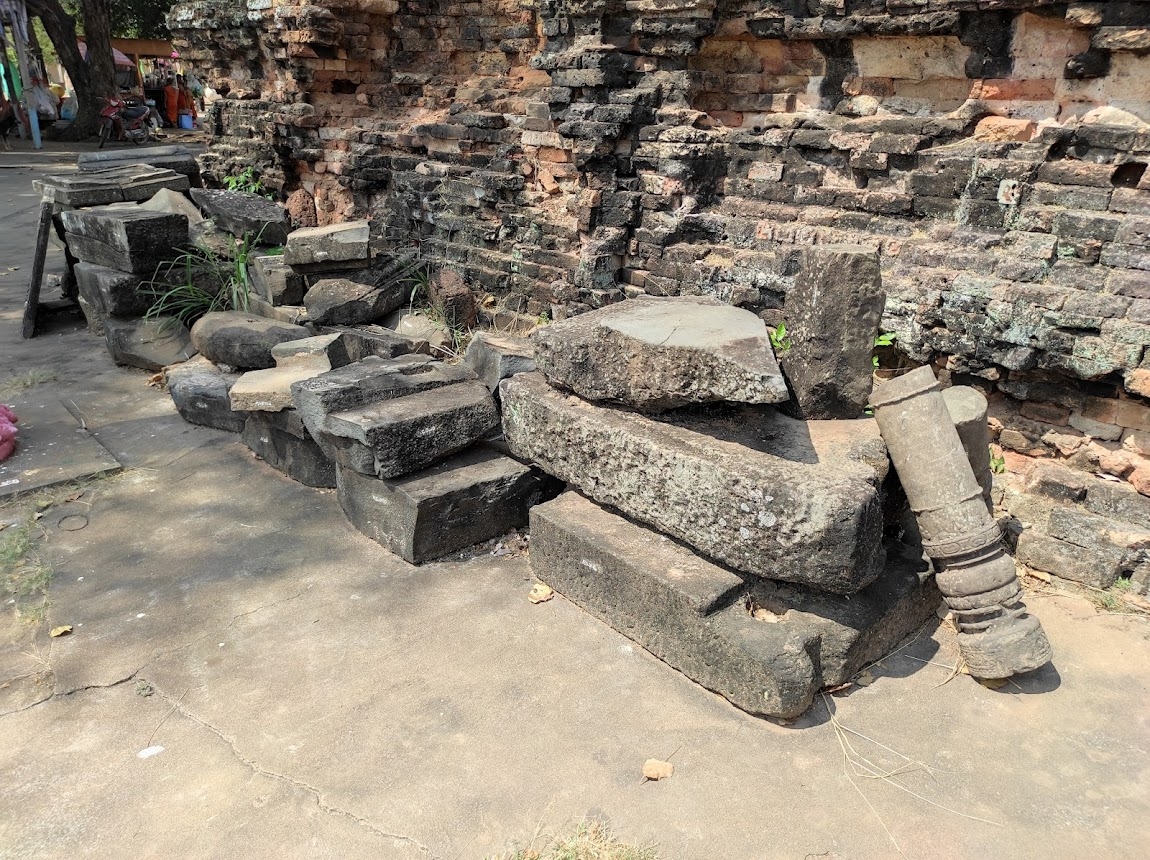
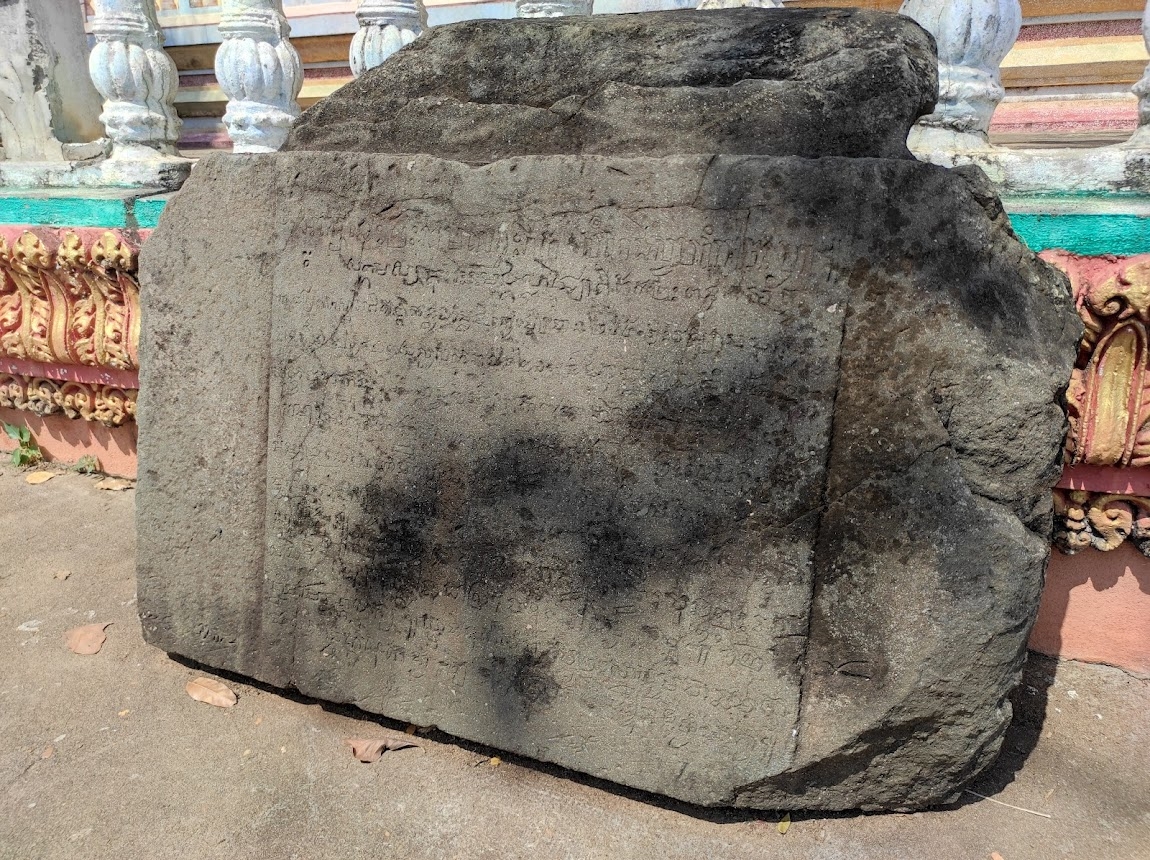
As mentioned, the doorframe carries an inscription registered under K. 81 featuring 12 lines on one side and 35 on the other both in Sanskrit. According to early French research, lines 1-16 of side A are devoted to the praise of King Bhavavarman. Then comes the eulogy of his son and successor (17-21), that of a person who was at the service of the father and the son (2-31), finally the erection by this character, who was lord of a locality called Ugrapura, of a Shivalinga invoked under the name of Bhadrecrara. The twelve lines of B contain only the eulogy of the same king Bharavarman, and the inscription stops abruptly after having introduced, in the last line, a personage in the service of this prince, apparently the same as that who appears in A. Baht notes that the inscription is unfinished and raises several questions which you can continue to read in Inscriptions sanscrites du Cambodge, M. A. Bath 1834.
In front of the pagoda on the east side is a construction of brickwork atop which a decorated door column has been placed. Around the pagoda are several old sema stones.
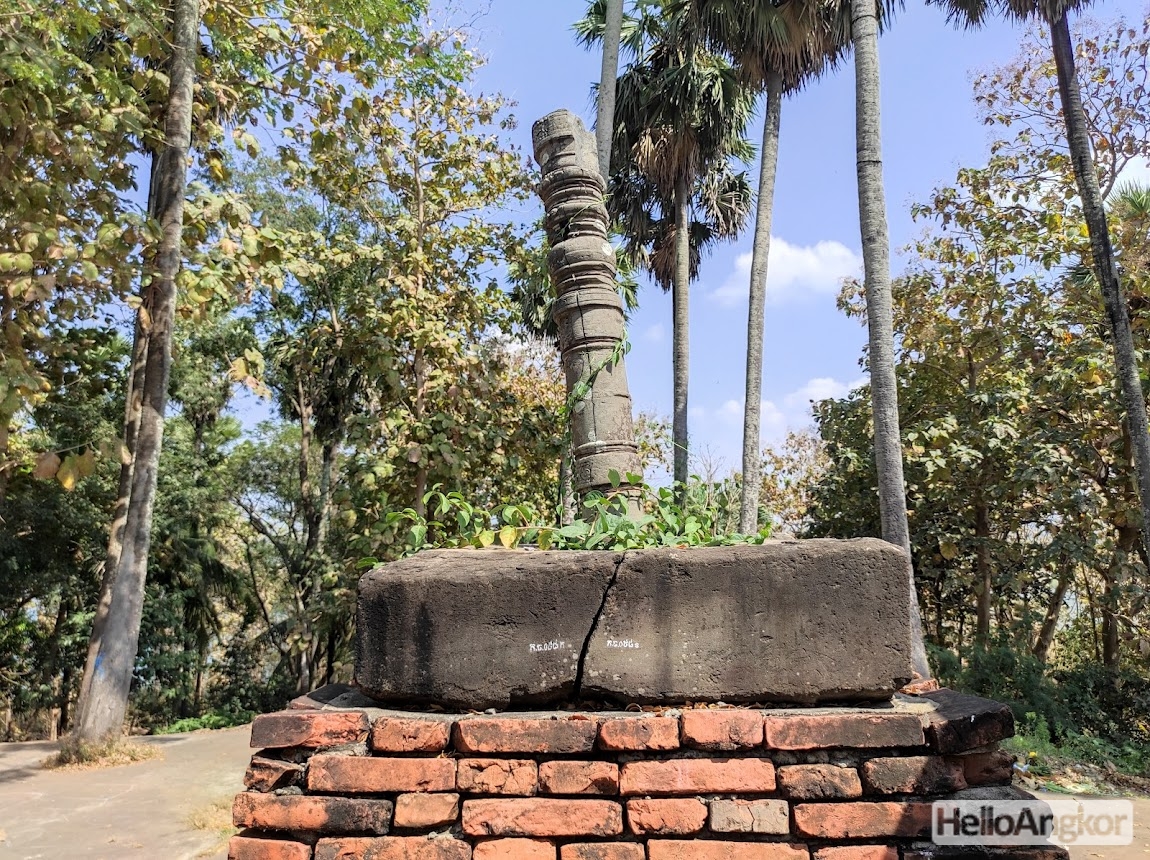


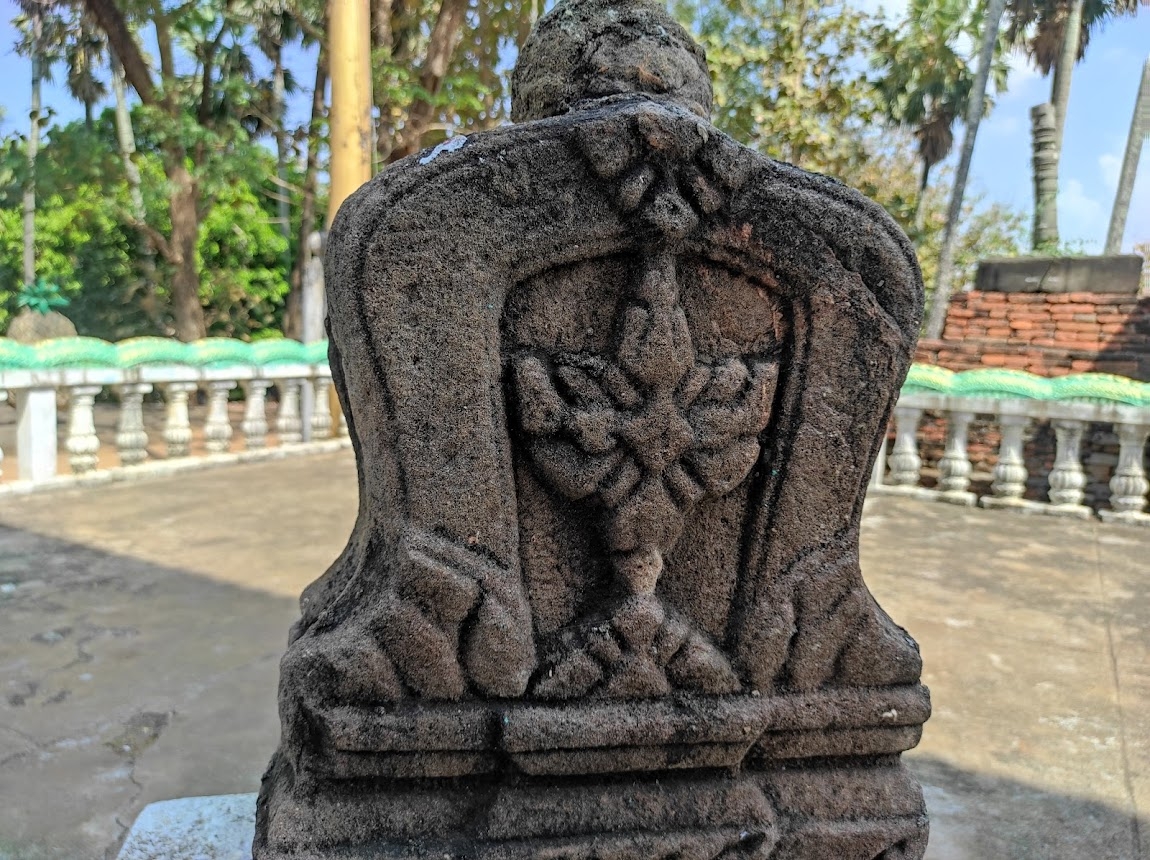
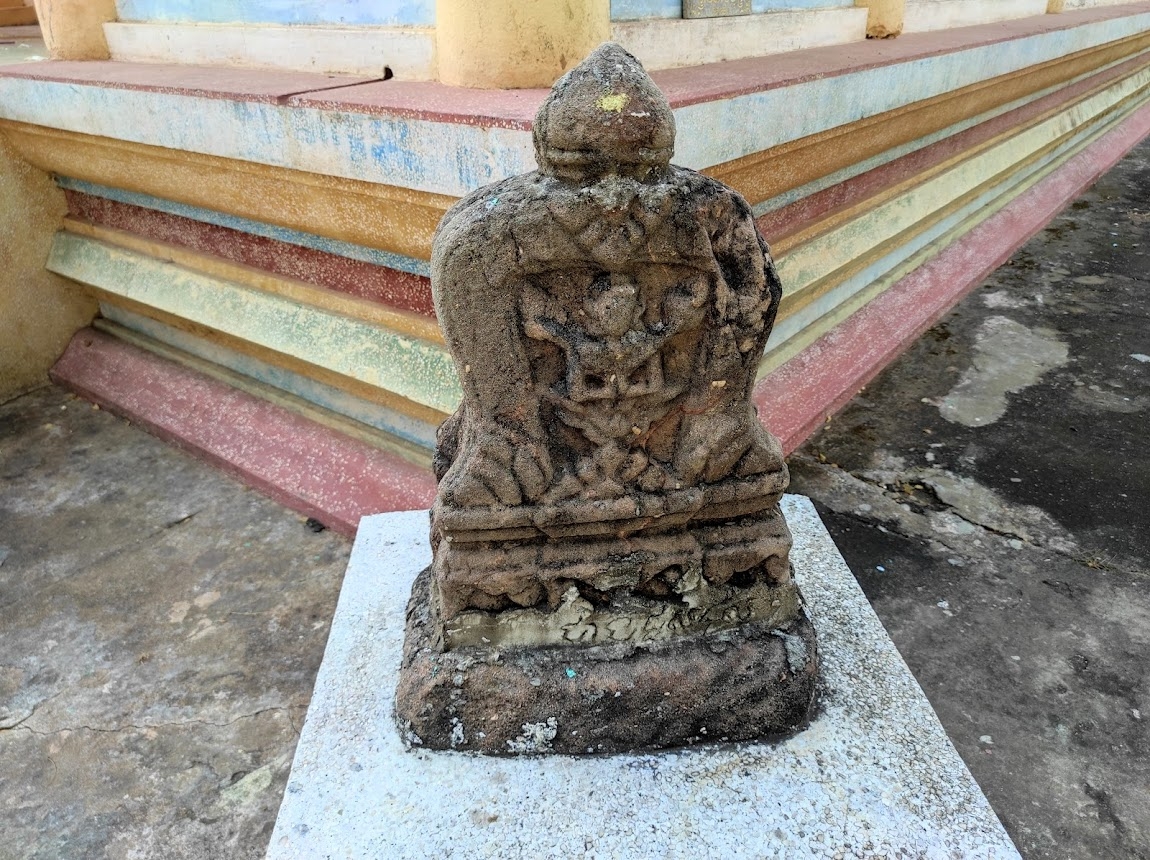
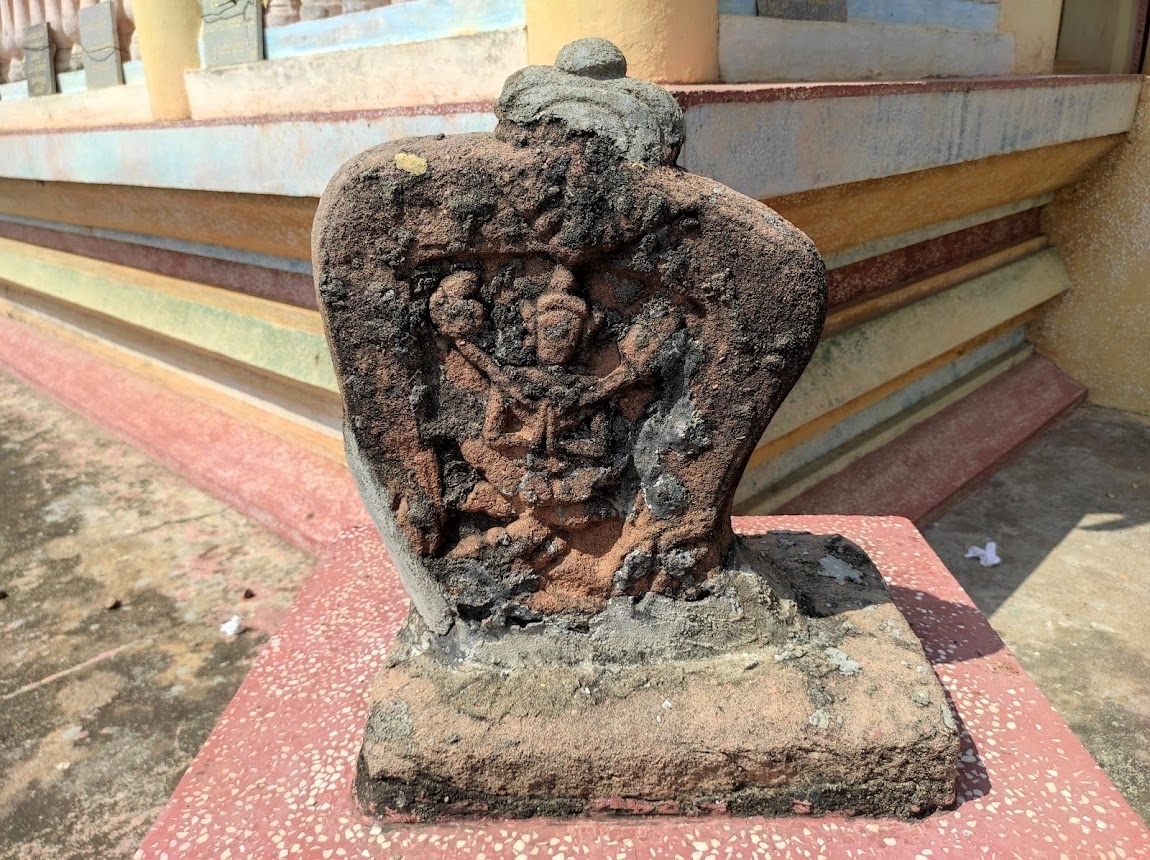
On the north side of the pagoda is a small cell, a couple of meters high and a few meters wide also with an entrance to the east which is flanked by round columns atop which is a decorated lintel. The artwork on the pilasters and the band top and bottom is quite beautiful featuring floral patterns occasionally with animals appearing. On the base slab you can see carvings of mini-prasats.
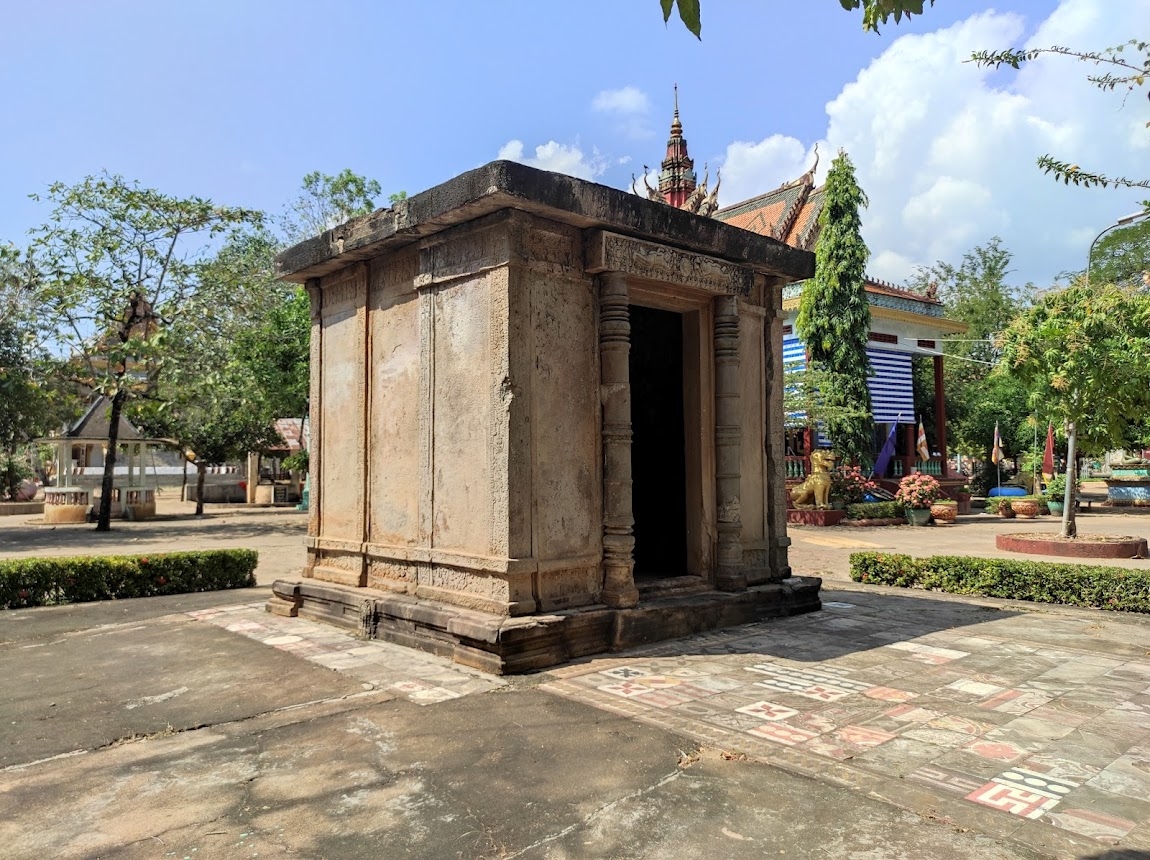
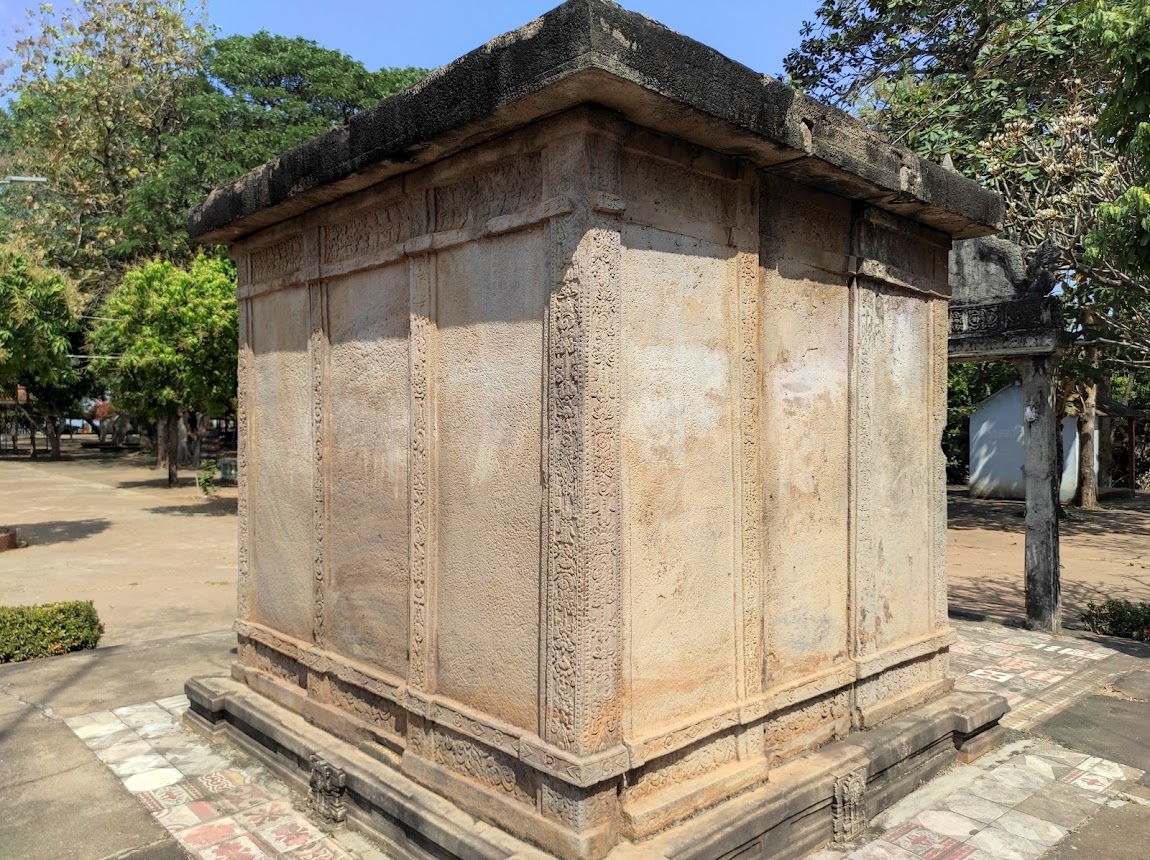
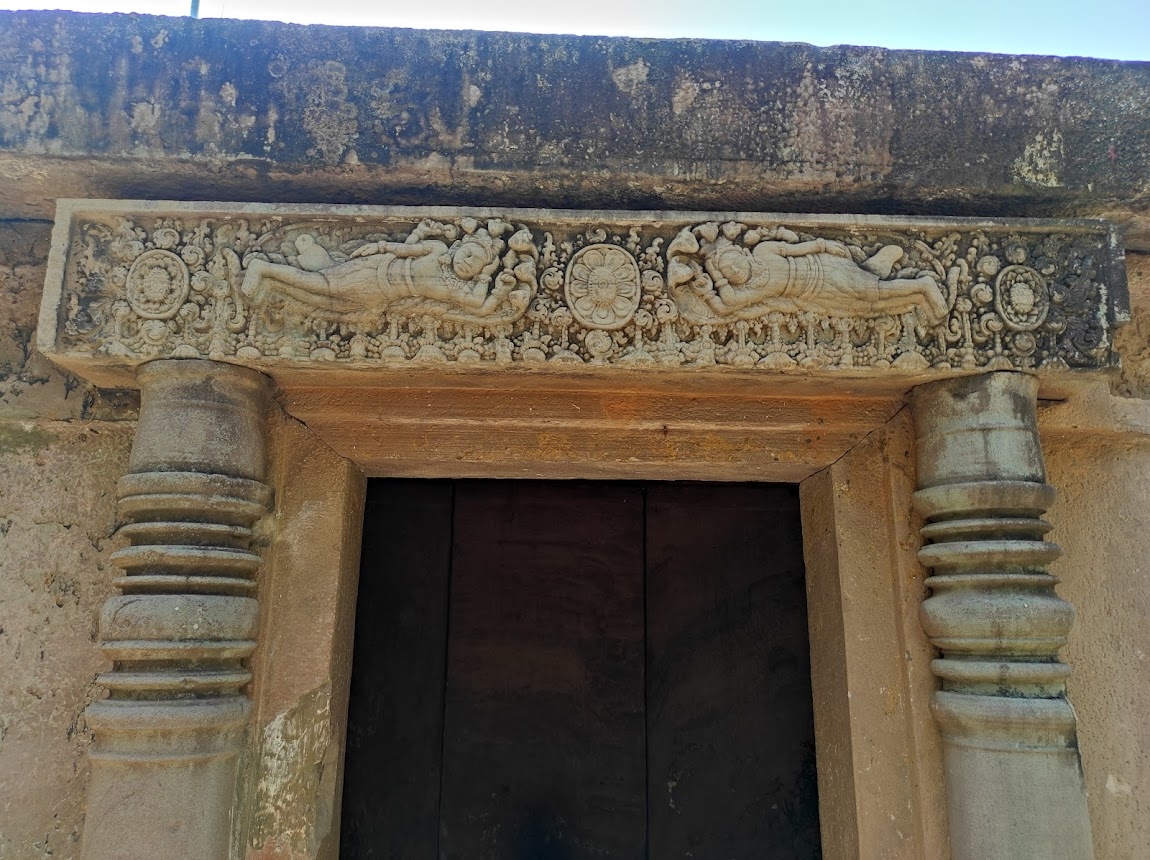
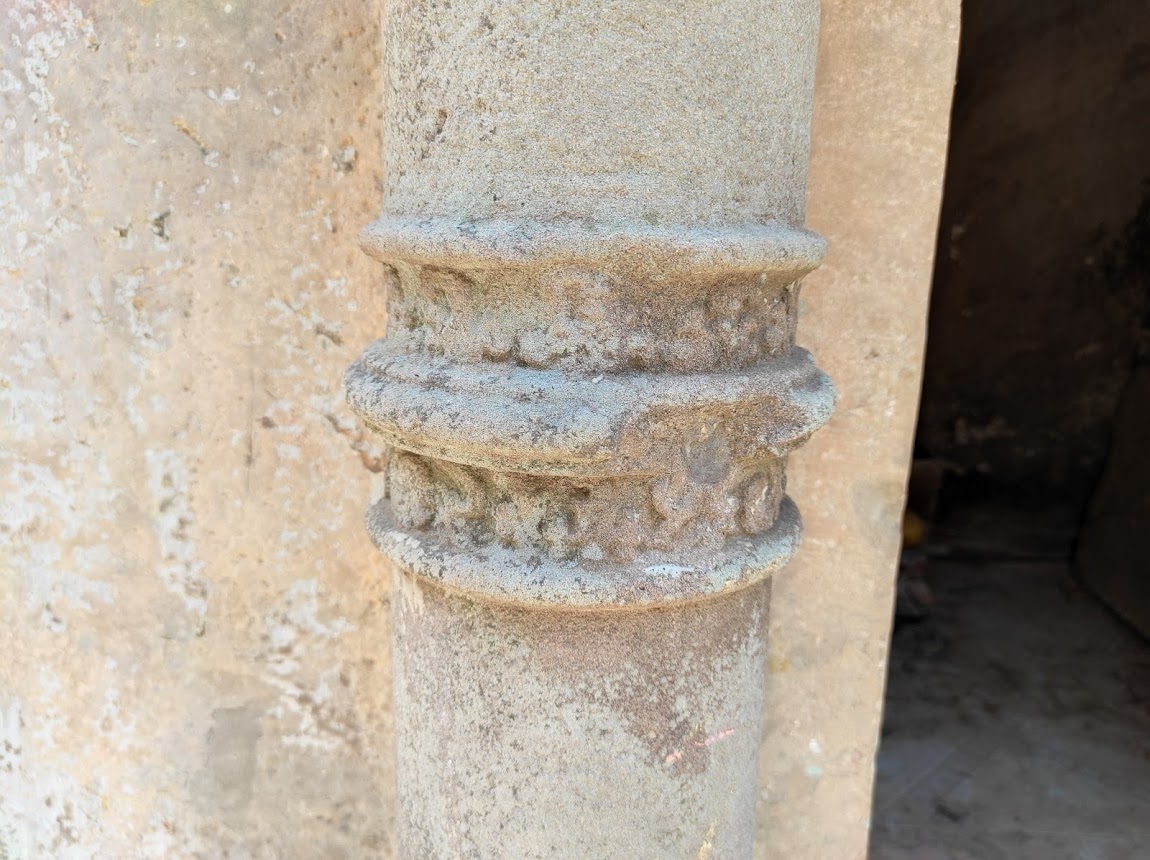
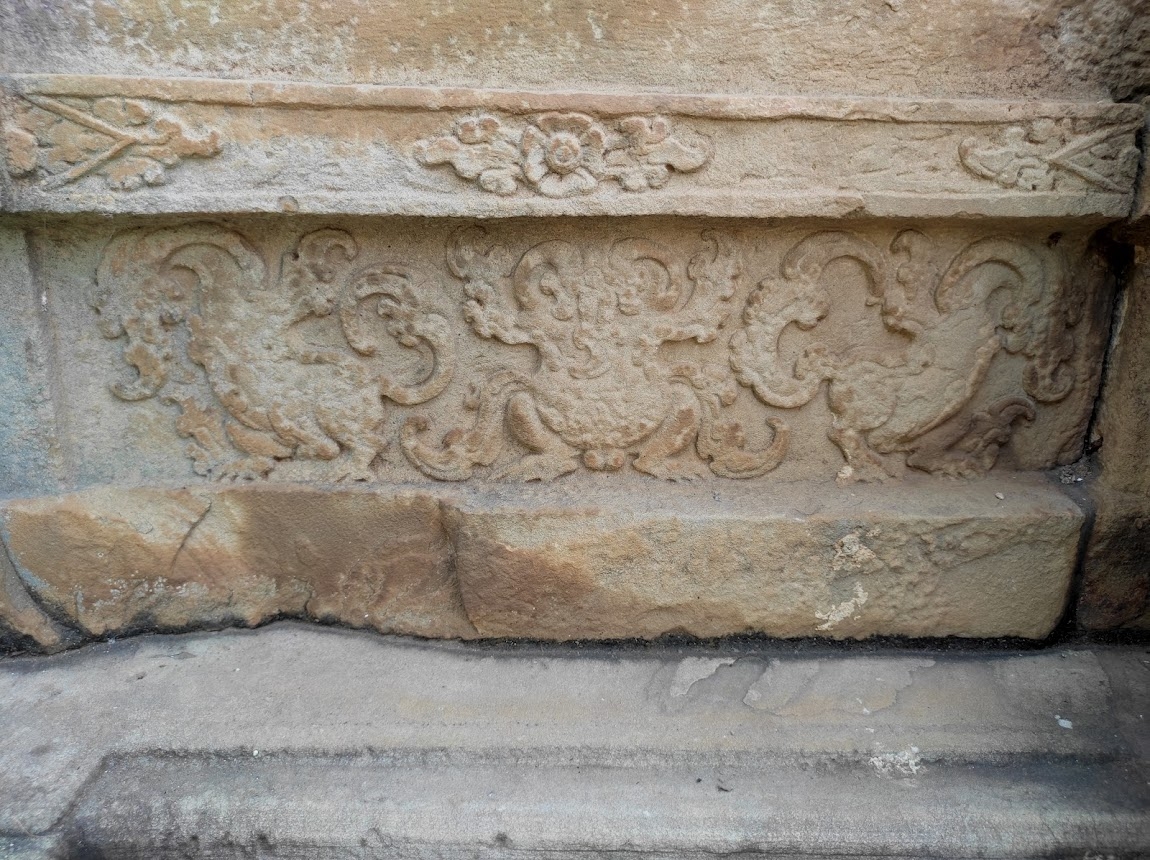
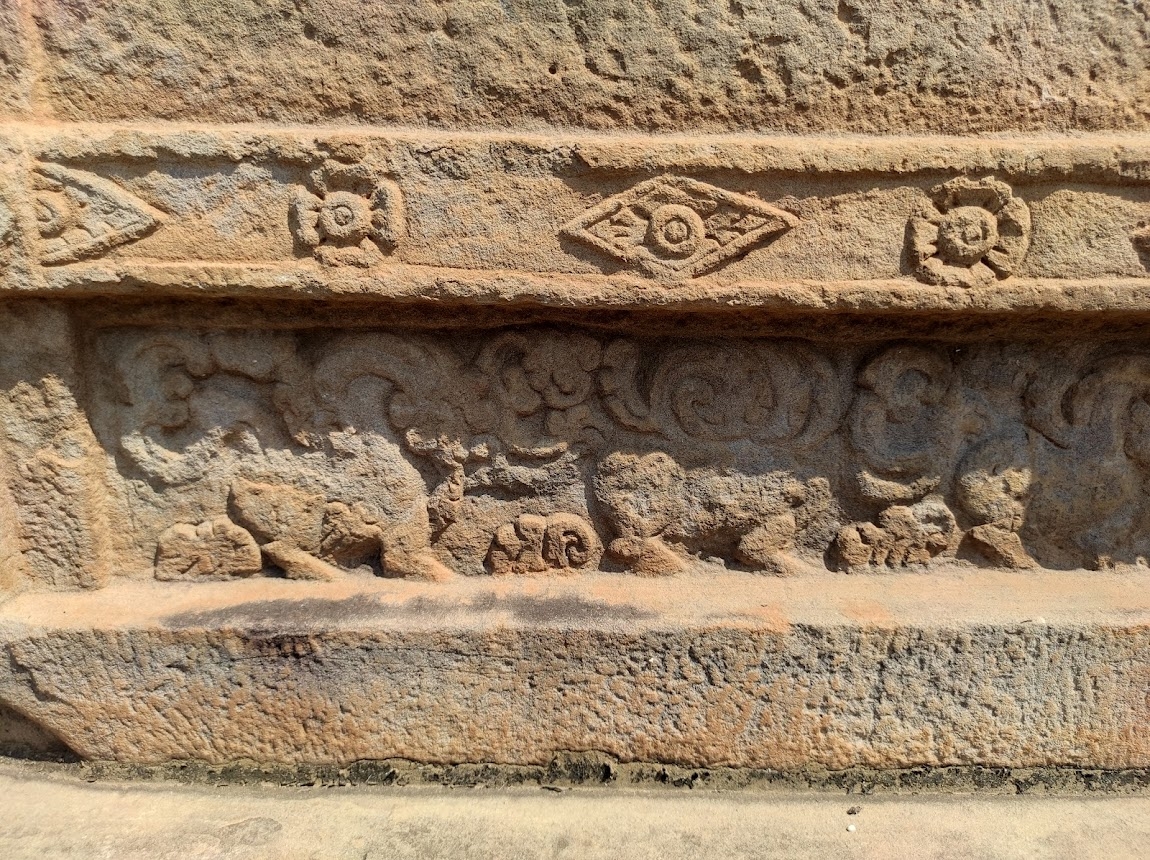
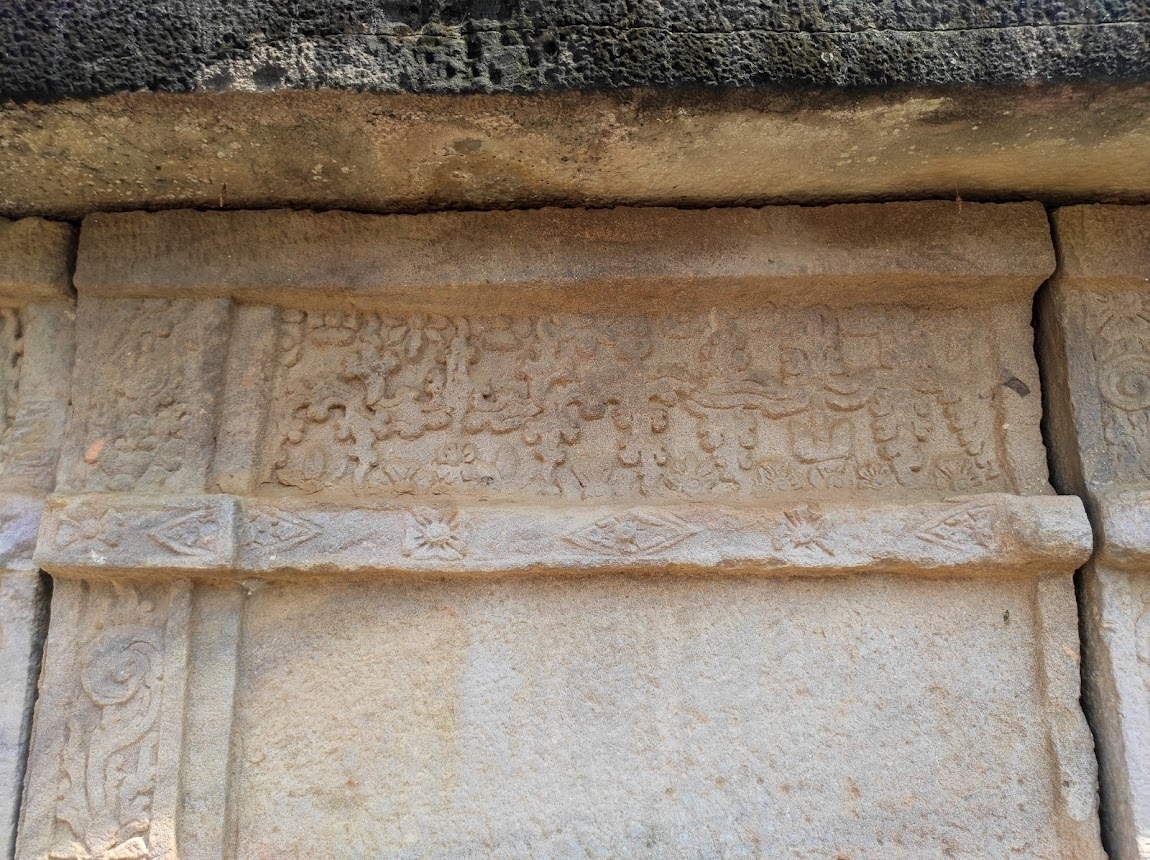
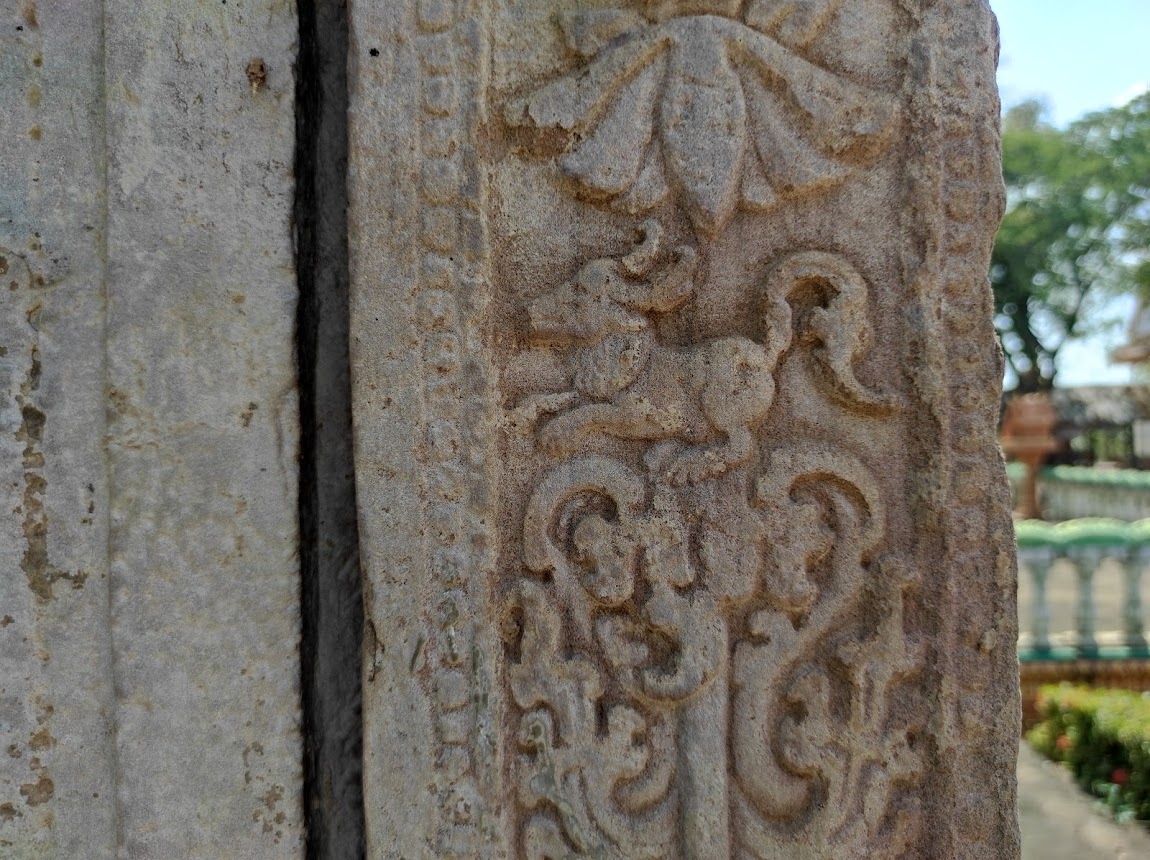


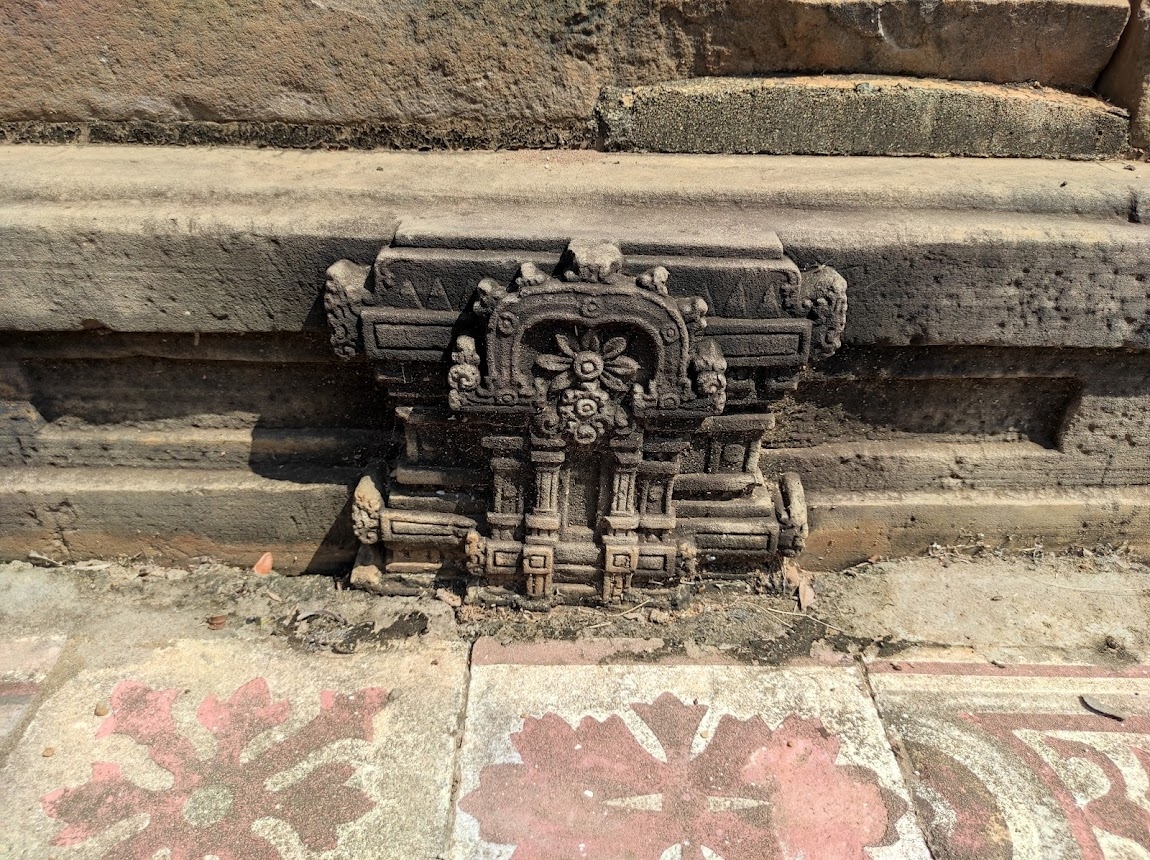
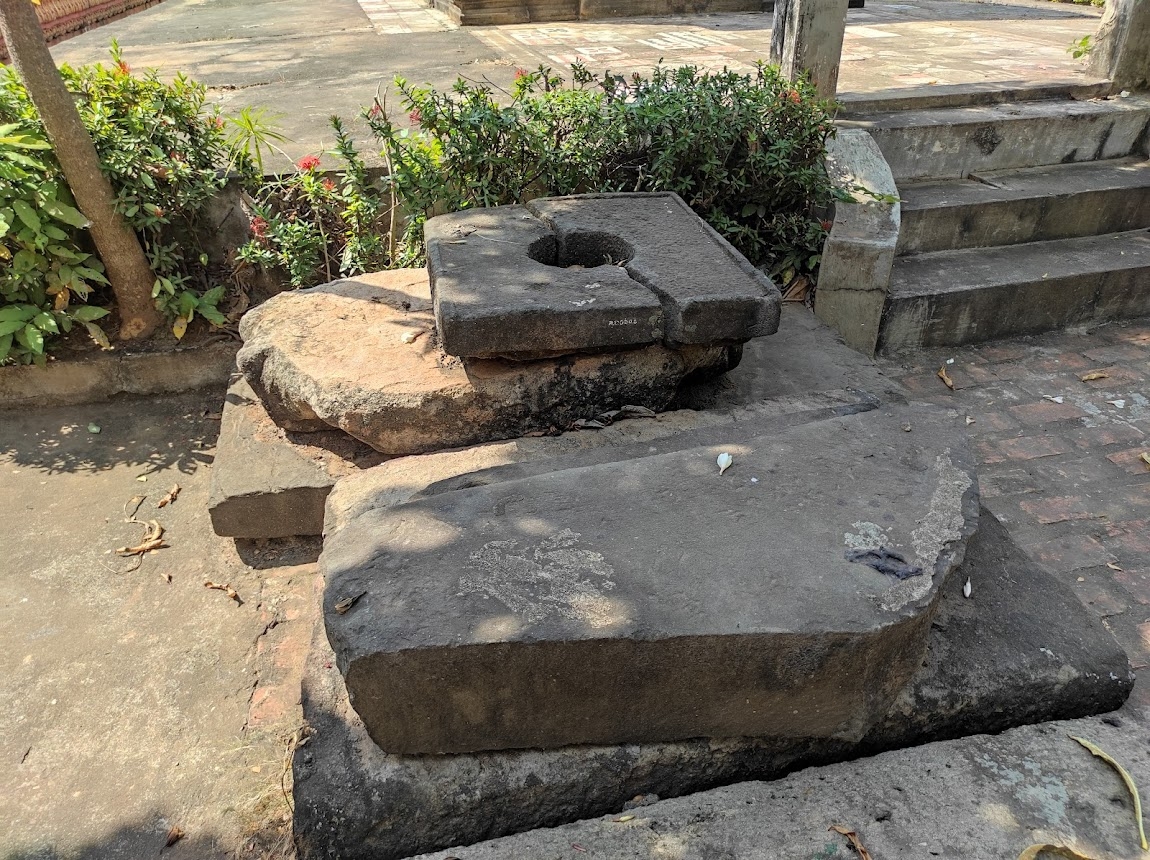
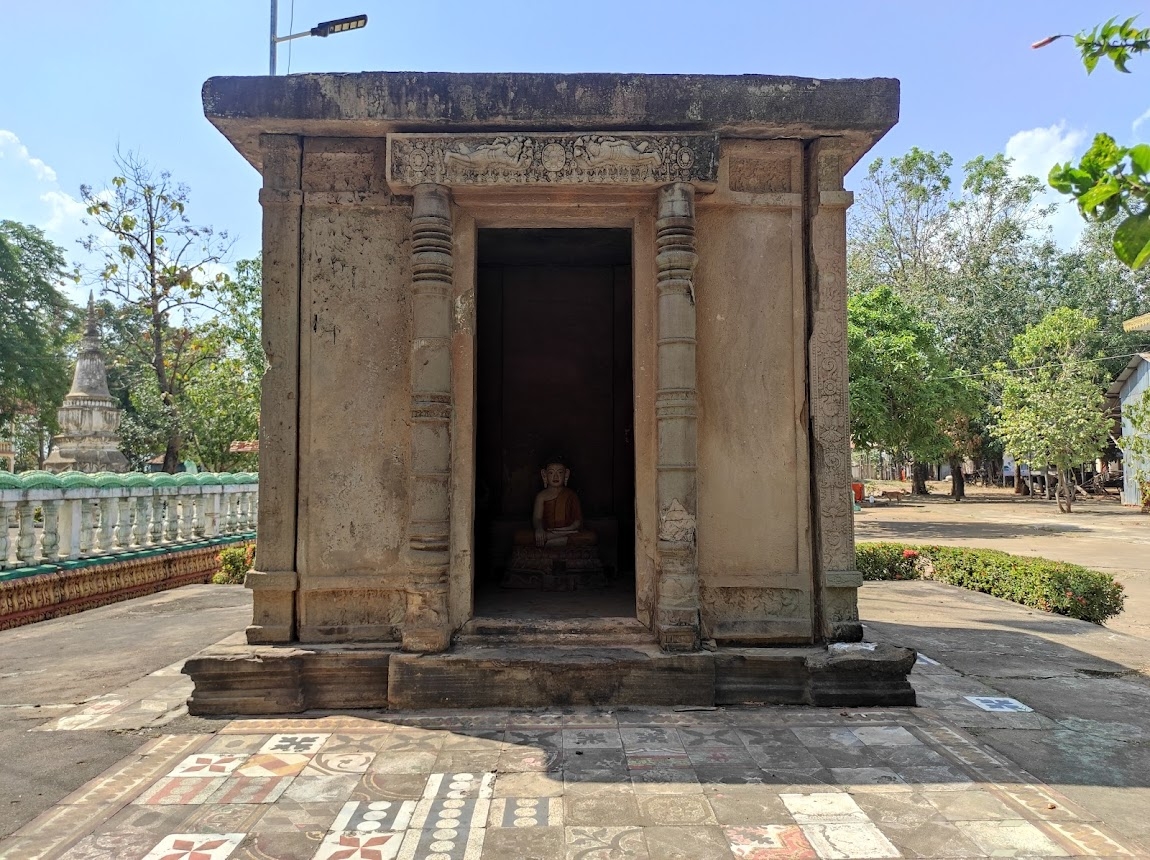
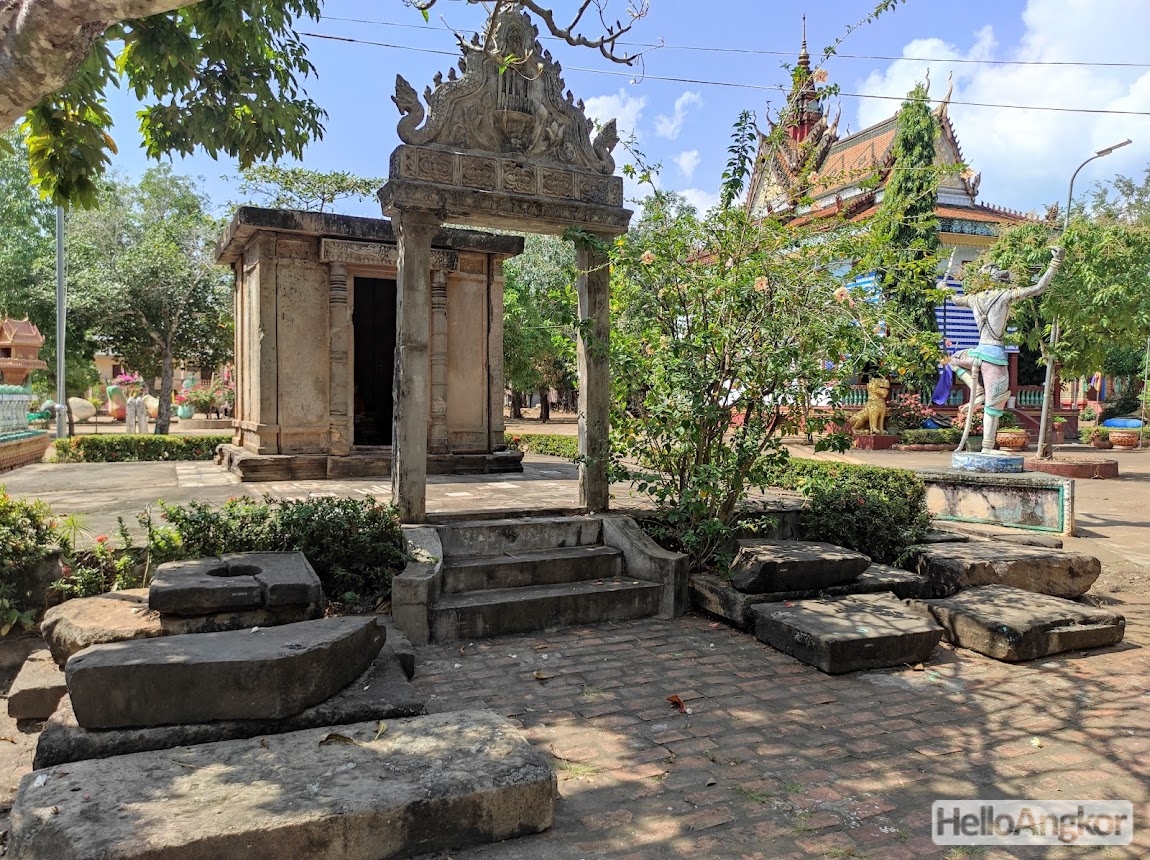
As mentioned earlier, the grounds are large and you can also relax and enjoy the views over the Mekong, check out the newer prasats, numerous sculptures including some of fruit…
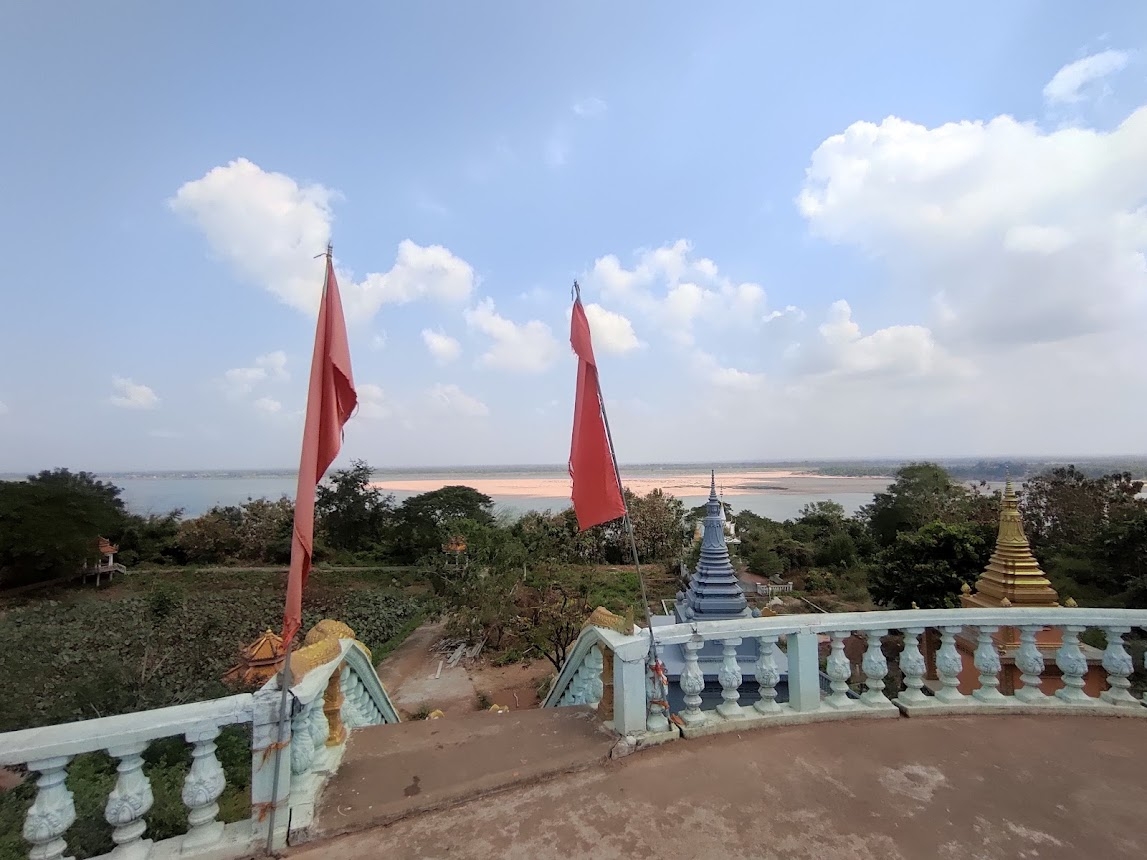
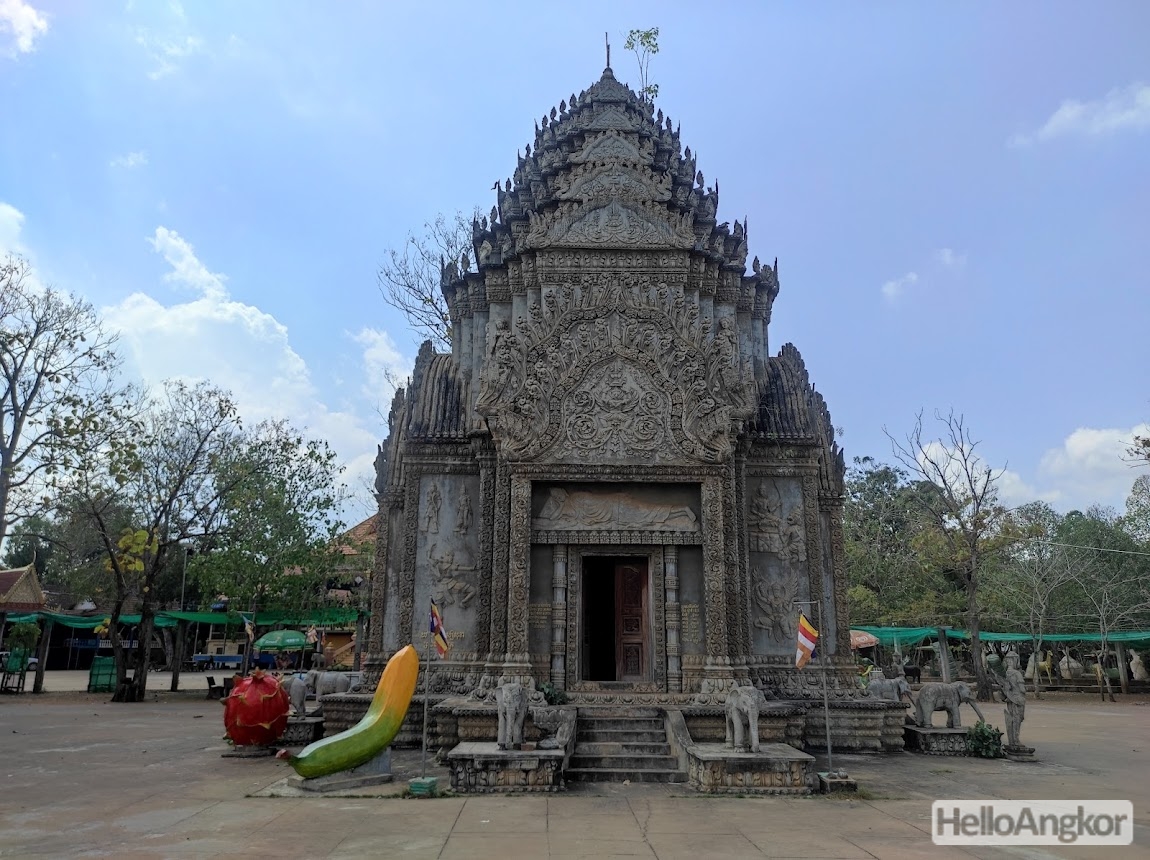

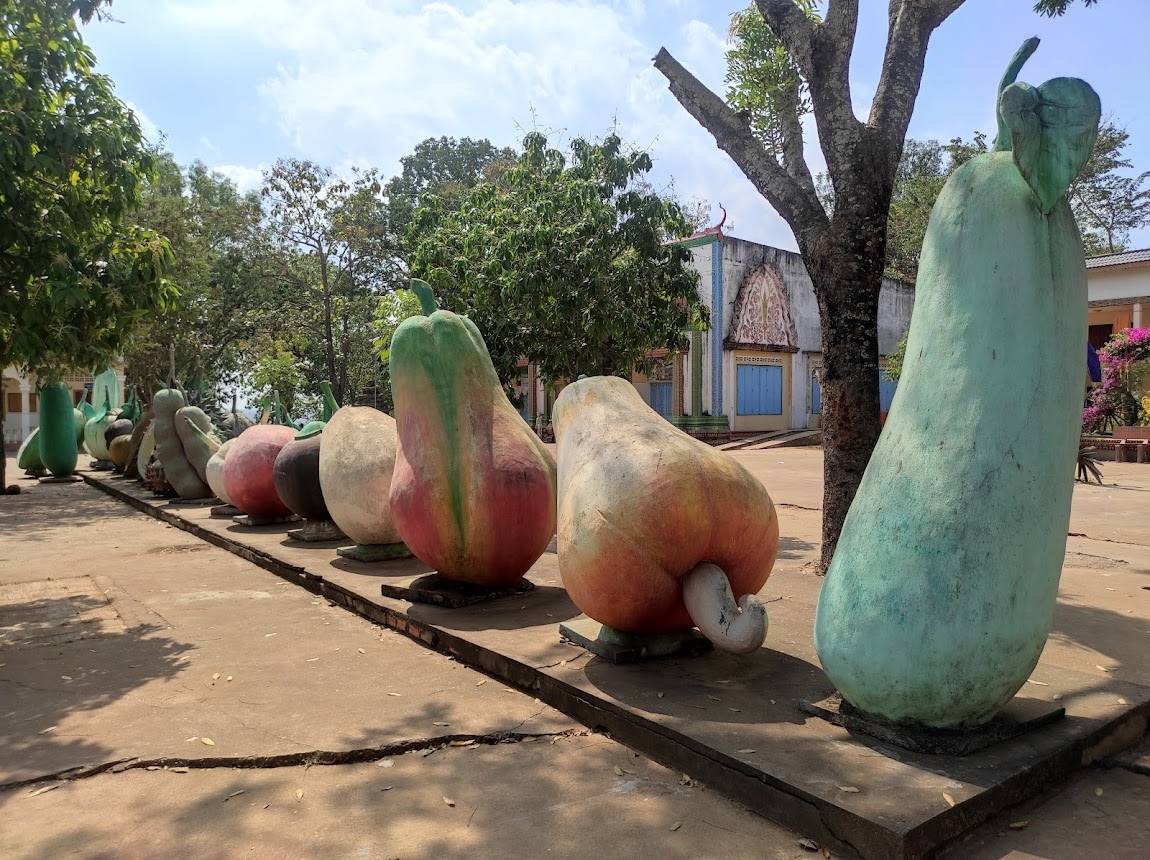
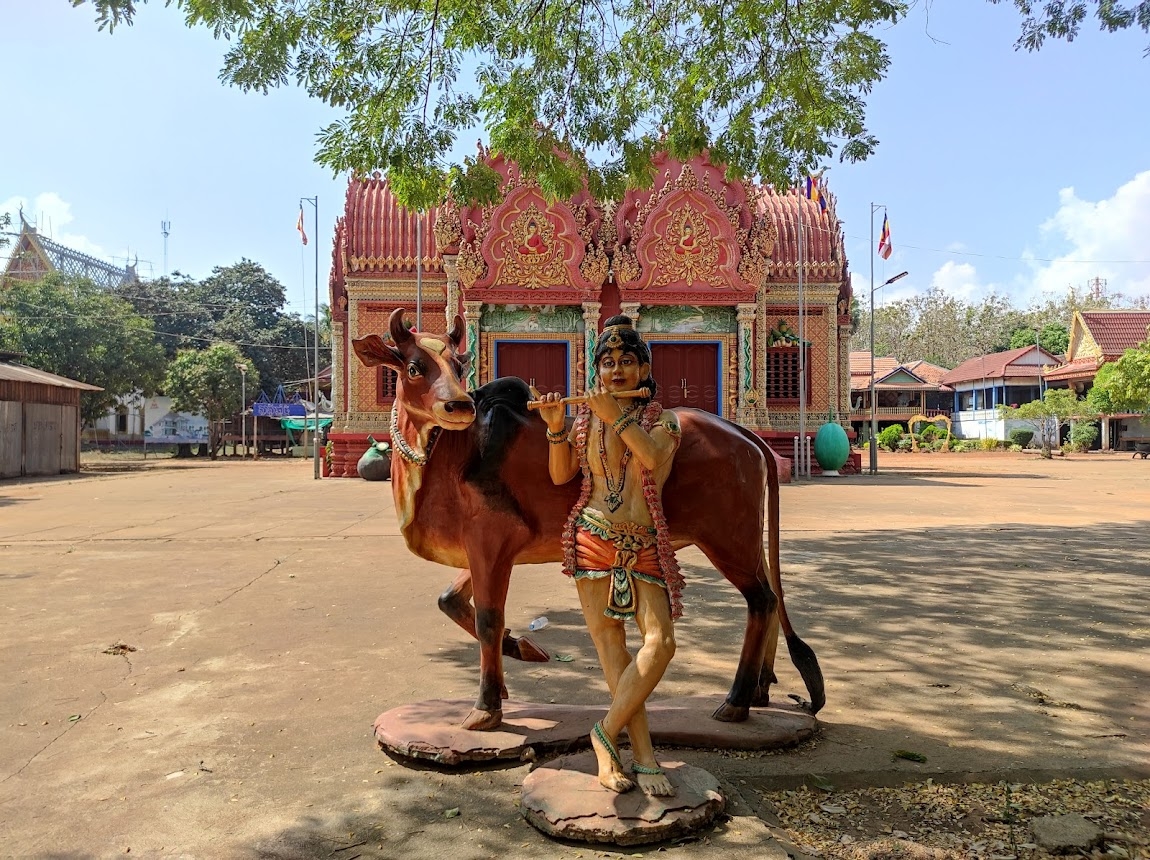
Down by the river, about 300 m north-northeast of the pagoda is Kok Preah Theat and around 2.5 km south (along the way to/from Kampong Cham city) is Kok Lvea Temple.
From Kampong Cham city, you can travel a scenic sealed road, sometimes bumpy and narrow in parts for two-way traffic, along the river for about 35 minutes by car, moto, or bike. There are lots of other pagodas along the way too.
Map
Site Info
- Site Name: Han Chey (Pr.) Khmer Name: បា្រសាទហាន់ជ័យ
- Reference ID: HA11440 | Posted: January 18, 2021 | Last Update: February 7th, 2023
- Other Names: Andaung Breng Temple, Andong Preng, ប្រាសាទអណ្តូងប្រេង
- Tags/Group: 7th century, pa, pr, ra, sema, T4, Temples
- Location: Kampong Cham Province > Kampong Siem District > Hanchey Commune > Han Chey Village
- MoCFA ID: 119
- IK Number: 83
- Inscription Number/s: K. 81

